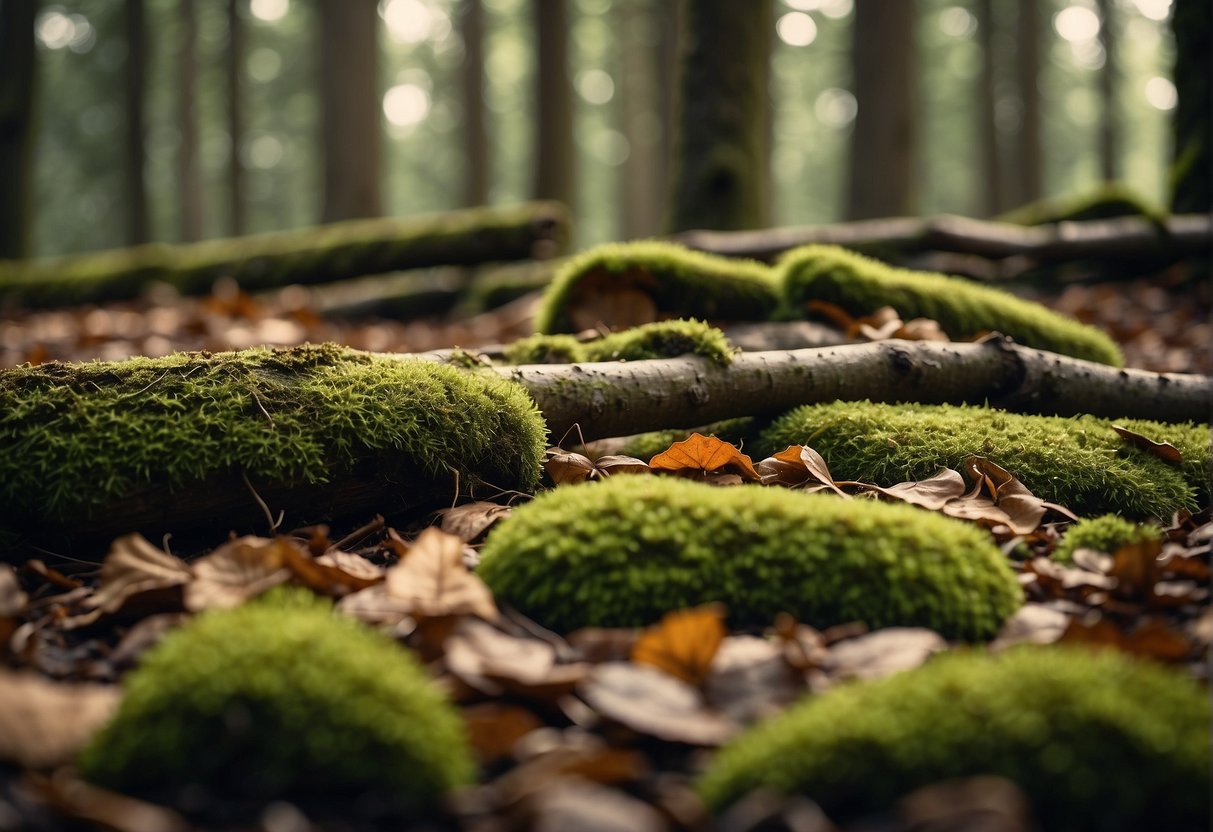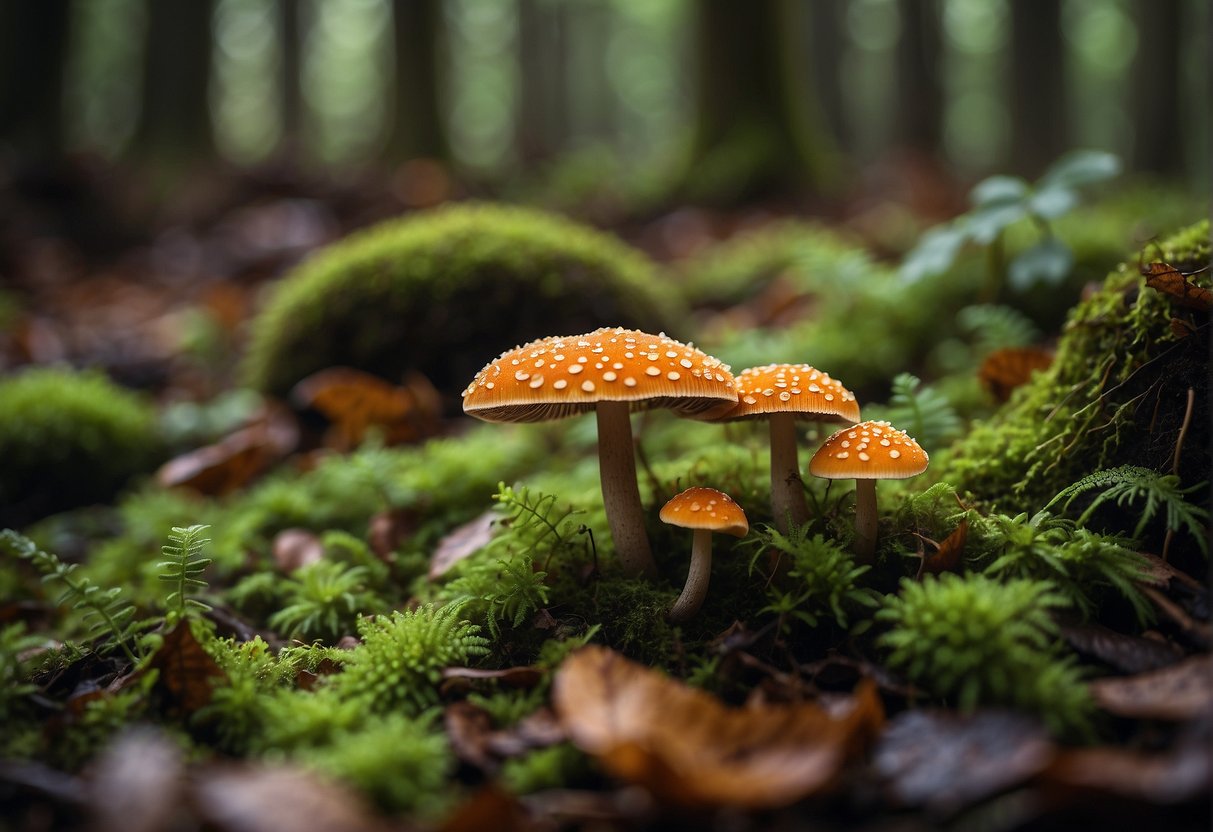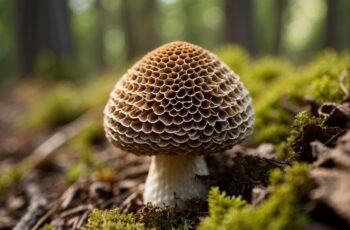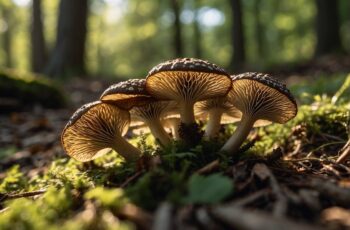Mushroom foraging can be a rewarding venture for the outdoor enthusiast, offering both the pleasure of a walk in nature and the excitement of a treasure hunt. As you set out, know that different mushrooms thrive in varying environments. It’s crucial to your success to understand where to look. You’re likely to find mushrooms in damp, shaded areas where organic matter abounds. Deep, well-draining soil in forests often harbors some of the most sought-after varieties. While foraging, you should pay close attention to areas around tree stumps, logs, and among leaf litter, where mushrooms may be hiding just out of sight.

When it comes to mushroom identification, it’s essential to proceed with caution and knowledge. Each mushroom species has its unique characteristics, and while some are delicious, others can be dangerous. It’s a good idea to carry a field guide or use a trusted online resource to verify your finds. Also, remember that mushrooms like morels often appear in specific seasons. Learning the patterns of when certain mushrooms grow can guide you to the right place at the right time.
As you get prepared to explore, consider that different types of mushrooms prefer different types of trees. For instance, certain mushrooms exclusively grow near conifers, others under hardwoods, and yet others on living or dead trees. By understanding these relationships, you’ll be able to head to the right part of the forest immediately. Always be sure to respect the environment and only take what you will use, ensuring that the woods remain a bountiful source for years to come. Remember, safe and responsible foraging is the hallmark of a true outdoors person.
Identifying Edible and Poisonous Species
When foraging for mushrooms, knowing the difference between safe delights and dangerous deceivers is crucial. Familiarize yourself with the key identifiers to keep your foraging fun and safe.
Mushroom Anatomy and Characteristics
Understanding mushroom anatomy is fundamental in identifying whether a mushroom is edible or poisonous. Caps, stems, gills, pores, and spores are all critical features. For instance, chanterelles have wavy caps and false gills, which look like wrinkles, while morels have a distinctive honeycomb appearance on their caps.
- Caps: Should be examined for their shape, color, and texture.
- Stems: Check for uniformity in texture and any bulbous bases that could indicate a toxic species like some Amanita.
- Gills: Note the color; mushrooms with white gills could potentially be Amanitas, which are often dangerous.
- Pores and Spores: A spore print can reveal the color of a mushroom’s spores, which is an important identification characteristic.
Common Edible Mushrooms
Edible mushrooms, delicious in flavor, come in various forms.
- Chanterelles: Recognized by their golden color and flesh that is solid and fibrous.
- Morels: With a spongy cap, morels are sought after for their nutty flavor.
- Oyster Mushrooms: These have a distinct oyster-shaped cap and grow on the sides of trees.
- Porcini Mushrooms: Have a thick stem and a cap that’s brown and bulbous.
Remember, while these mushrooms are generally safe, proper identification is key as there are look-alikes.
Recognizing Poisonous Varieties
Caution is crucial when distinguishing poisonous mushrooms. Toxic mushrooms can have features alarmingly similar to their edible counterparts.
- Amanita Phalloides: Also known as the “Death Cap,” is one of the most deadly, with a greenish cap.
- Mushrooms with red on the cap or stem: Should generally be avoided.
- White Gills: A warning sign especially if the mushroom also has a skirt or ring on the stem and a bulbous or sack-like base.
It’s essential to consult detailed guides or local experts, as mushroom identification by inexperienced foragers can lead to serious health risks.
Best Times and Places to Forage
Embarking on a mushroom foraging journey requires knowledge about the optimal times and the right habitats. Pay attention to these specifics to improve your chances of a bountiful hunt.
Seasonal Foraging Tips
Summer: This season can be bountiful, especially after heavy rains which encourage mushroom growth. Look for mushrooms from early morning as they can wilt under the hot afternoon sun.
Early Spring: The moisture from melting snow and rain makes woods lively with mushrooms. Morels, for example, appear in abundance during this time in North America.
Autumn Months: A prime time in the cooler, damp weather. Many varieties, including chanterelles and porcini, start popping up in the forests.
Ideal Habitats for Mushroom Growth
Oak and Beech Woodlands: These trees are particularly good for finding mushrooms, as they form mycorrhizal relationships with fungi.
Conifers and Pines: Some mushrooms have a special affinity for the acidic soil around these trees, like certain boletes.
Meadows: Open grassy areas are perfect for species like puffballs and morels in spring.
Remember, be sure to have a mushroom foraging guide on hand to help with identification and safety.
Mushroom Foraging Safety and Ethics

When looking for mushrooms in the wild, it is essential to understand the precise measures to prevent contamination and poisoning, as well as the importance of sustainable foraging practices to ensure the conservation of valuable ecosystems.
Preventing Contamination and Poisoning
You must be able to positively identify any mushroom before considering consumption. Many edible mushrooms have toxic look-alikes that can cause severe health issues like vomiting, diarrhea, or even coma. Rely on verified resources or consult a certified mycologist to distinguish between safe and poisonous mushrooms. Always forage with the following checklist:
- A trusted mushroom identification guide
- Well-marked maps or a GPS device
- A lightweight and accessible first aid kit
Furthermore, stay clear of areas that could potentially contaminate mushrooms with harmful substances:
- Never forage in lawns or places treated with pesticides or fertilizers.
- Avoid collecting mushrooms near busy roads or old dump sites.
- Be cautious with fungi growing on or near ornamental or treated wood.
Sustainable Foraging and Conservation
Your foraging activities should always align with the preservation of natural ecosystems and the continuation of mushroom growth cycles. Keep sustainability in mind with these actions:
- Harvest only what you need and leave plenty for wildlife and future growth.
- Use a mesh bag to allow spores to disperse and contribute to new growth.
Respect local foraging laws and guidelines, which are in place to protect natural resources and the interests of fellow foragers and the broader community. When you forage, act as a steward of the environment, ensuring that decaying organic matter and the surrounding ecosystem remain undisturbed for generations to come. Remember, ethical foraging includes sharing your knowledge with others, fostering a community dedicated to responsible and sustainable harvests.
Culinary Uses and Nutritional Benefits

Mushrooms are a versatile ingredient for chefs and home cooks alike, offering a variety of flavors and textures to dishes. They also provide a bounty of nutrients, making them a healthy addition to your diet.
Selecting Mushrooms for Cooking
When you’re at the farmer’s markets or your local grocery, look for edible mushrooms that are firm, plump, and clean. The most common edible mushrooms you’ll encounter include varieties like Portobello, Shiitake, and Chanterelle, each with its own unique taste and ideal cooking method.
- Portobello: Large and meaty, great for grilling.
- Shiitake: Have a rich, smoky flavor; perfect for stir-fries.
- Chanterelle: Delicate and slightly sweet; excellent in sauces and sautés.
Always store your mushrooms properly – in a paper bag in the refrigerator – to extend their freshness.
Mushroom Nutritional Profile
Mushrooms are not just a flavorful addition to meals, they’re nutritional powerhouses. Here’s a quick glance at the nutrients they offer:
- Vitamins: Rich in B vitamins like B2 (riboflavin) and B3 (niacin).
- Minerals: Contain minerals such as selenium and potassium.
- Antioxidants: Provide antioxidants like ergothioneine, which support your immune system.
- Low Calories: Generally low in calories, making them a guilt-free addition to any meal.
Looking beyond culinary uses, certain varieties of mushrooms are identified as medicinal mushrooms. These include Reishi and Turkey Tail, cultivated not just for flavor but for their health-promoting properties. Remember, the key to enjoying mushrooms is balancing flavor with their impressive nutritional profile.


